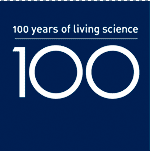Timeline
- 1845 – 1899 |
- 1900 – 1909 |
- 1910 – 1919 |
- 1920 – 1929 |
- 1930 – 1939 |
- 1940 – 1949 |
- 1950 – 1959 |
- 1960 – 1969 |
- 1970 – 1979 |
- 1980 – 1989 |
- 1990 – 1999 |
- 2000 – present
Imperial College 1980 - 1989
World
 1981 - AIDS identified
1981 - AIDS identified
The first published article related to AIDS was in 1981. The principal author’s name was Michael Gottlieb and it appeared in the Morbidity and Mortality Weekly Report for June 5th. This article reported that there was a random increase in pneumocystis carinii pneumonia (PCP), a rare lung infection. The Centers for Disease Control and Prevention noticed it when a drug technician named Sandra Ford noticed that there was an unusually high number of requests for the drug that treated PCP.
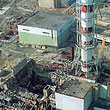 1986 - Chernobyl Nuclear Accident
1986 - Chernobyl Nuclear Accident
An explosion at the Chernobyl Nuclear Power Plant took place on April 26, 1986 at 01:23 a.m resulted in radioactive contamination of the surrounding geographic area. It is regarded as the worst accident in the history of nuclear power. A plume of radioactive fallout drifted over parts of the western Soviet Union, Eastern and Western Europe, Scandinavia, the UK, Ireland and eastern North America. Large areas of Ukraine, Belarus, and Russia were badly contaminated, resulting in the evacuation and resettlement of over 336,000 people.
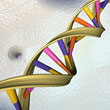 1987 - DNA First Used to Convict Criminals
1987 - DNA First Used to Convict Criminals
DNA First Used to Convict Criminals
Colin Pitchfork was the first criminal caught based on DNA fingerprinting evidence. Pitchfork raped and murdered two girls in Narborough, Leicestershire in 1983 and 1986. He was arrested in 1987, confessed, and was sentenced in 1988.
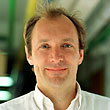 1989 - Tim Berners-Lee invents the World Wide Web
1989 - Tim Berners-Lee invents the World Wide Web
In 1989, while working at CERN, the European Particle Physics Laboratory in Switzerland, Tim Berners-Lee came up with the idea of the World Wide Web, a new way of using existing internet technology to share information. He wrote the first web browser the following year, and went on to found the World Wide Web Consortium (W3C) in 1994.
College
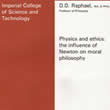 1980 - Humanities Department opened
1980 - Humanities Department opened
The Humanities Department was formed from the Associated Studies and History of Science with the first Head of Department being Professor David Raphael, a Philosopher.
back to top
 1980 - Joint course with Royal College of Art in Engineering Design established
1980 - Joint course with Royal College of Art in Engineering Design established
The Department of Mechanical Engineering launched collaboration with the Royal College of Art Industrial Engineering School.
back to top
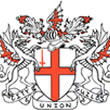 1985 - City & Guilds Centenary celebrations
1985 - City & Guilds Centenary celebrations
In 1985, the City & Guilds College celebrated its Centenary. The festivities included a visit by Margaret Thatcher to the College, and a major exhibition entitled Tech 2000.
Watch the highlights from the celebrations
back to top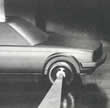 1985 - Honda Wind Tunnel opened
1985 - Honda Wind Tunnel opened
The Aeronautics Department has developed expertise in testing vehicle aerodynamics, including the Bluebird of Donald Campbell and the Formula 1 racing car companies. In 1982, the Honda R&D Division agreed a five year contract for the construction of a £700,000 wind tunnel specifically for studying vehicle aerodynamics with the capability of simulating cross winds and ground effects.
Watch the opening of the Honda Wind Tunnel
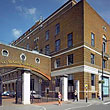 1988 - Imperial College merges with St Mary's Hospital Medical School
1988 - Imperial College merges with St Mary's Hospital Medical School
In 1988, Imperial College of Science, Technology & Medicine was formed through the merger of the College with St Mary's Hospital Medical School. A joint message from Imperial's then Rector Sir Eric Ash and the then Dean of St Mary's Professor Peter Richards states:
'The merger of our institutions was inspired by a vision of the great advances in science and medicine we could make together. The past experience of Imperial College is that students are enthused by biomedical topics and show great interest in undertaking research in this area both as undergraduates and postgraduates. St Mary's is similarly spurred by the creative opportunity of ideas within one institution.
We are confident of the rich potential for development in Clinical Ophthalmology and Visual Science. Also of the central role of the Centre for Biological and medical Systems as the spur and focus to harness the complementary skills and interests of the enlarged Imperial College of Science, technology and Medicine. The key to our success in the biomedical field lies in bringing together multidisciplinary teams with established records of achievements. We undertake to build a team who will keep Imperial College of Science, Technology and medicine at the international forefront of biomedical research and teaching.'
Watch the official merger ceremony
People
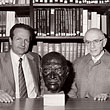 Igor Aleksander (1937)
Igor Aleksander (1937)
Professor Igor Aleksander (shown here on the left with Andre Gabor) joined the Computing Department in 1984. He became 1st Kobler Professor of Management of Information Technology.
In 1988 he took the Chair of Neural Systems Engineering in the Electrical Engineering Department and devised the first neural pattern recognition system. Aleksander specialises in neural networks and artificial intelligence.
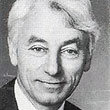 Sir Eric Ash (1928)
Sir Eric Ash (1928)
Sir Eric Ash came to Britain to escape Nazi Germany in 1938. He gained a scholarship to study at Imperial College where he took his BSc and then PhD, this studying under Denis Gabor, the Nobel Prize Winner who invented Holography and the flat televison tube.
Ash then became a Research Fellow at Stamford University, between 1952 and 1954. Returning to London, in 1954 he attended Queen Mary College, London for a year, becoming a Research Engineer at Standard Telecommunication Laboratories Ltd from 1955-1963.
Ash then joined University College London in 1963 as a Senior Lecturer becoming Professor in 1967 and Head of the Department or Electrical and Electronic Engineering in 1980.
He became Rector of Imperial in 1985, retiring in 1993. He was awarded the Faraday Medal of Institution of Electrical Engineers in 1980 and the Royal Medal of the Royal Society in 1986. Between 1997 and 2002 he was Treasurer and Vice President of the Royal Society.
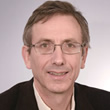 Professor Simon Kirwan Donaldson FBS (1957-)
Professor Simon Kirwan Donaldson FBS (1957-)
Educated at Cambridge and Oxford, Donaldson was appointed Junior Research Fellow at All Souls College in 1985. Donaldson won the Fields Medal in 1986 for the study of topology and four-manifolds, and euclidian four-space. In 1999, he moved to Imperial College London.
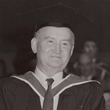 Frank Cooper becomes Chairman
Frank Cooper becomes Chairman
The Rt Hon Frank Cooper, educated at Pembroke College Oxford, became Chairman of the Governing Body in 1988.
Read an appreciation of Sir Frank Cooper by Eric Ash
back to top
 David Potter
David Potter
David Potter was educated at Cambridge and Imperial College (PhD 1970). He then remained at Imperial where he worked as a Lecturer in the Physics Department. Potter worked on mathematical problems related to plasma physics. Here he developed his ideas in the methods of using micro-processes to build hand organisers.
In 1980 with some of his ex-students from Imperial, he founded PSION (Potter's Scientific Instruments Or Nothing) which began to develop software and hardware applications, based upon the academic work conducted at Imperial. In 1984 PSION launched the Psion Organiser, the first volume-produced handheld computers. The Organiser may seem limited by today's standards but was revolutionary for its time. From there PSION went from strength to strength, becoming one of the most successful British IT companies, both in commercial and in terms of technological innovation.
 Professor Richard Ian Kitney OBE, FREng, DSc (Eng) FCGI
Professor Richard Ian Kitney OBE, FREng, DSc (Eng) FCGI
Richard (Dick) Kitney is Professor of Biomedical Systems Engineering in the Department of Bioengineering, Senior Dean and Director of the Graduate School of Engineering and Physical Science, Imperial College London. He was the first Head of Department of the Department of Bioengineering and the Director of the Centre of Medical and Biological Systems.
He joined the College as a student in the Electrical Engineering department, spending his vacations working in industry for the company that supported his studies.
A leading expert in the field of biomedical engineering and healthcare, Professor Dick Kitney received a prestigious Honorary Fellowship of the Royal College of Surgeons in June 2006. He is the first engineer ever to receive an Honorary Fellowship of the Royal College, according to the College's President Bernard Ribeiro.
As well as being an Honorary Fellow of the Royal College of Surgeons, Professor Kitney holds Fellowships of the World Technology Network, the College of Fellows of the American Institute for Medical and Biological Engineering and the City and Guilds of London Institute. In 2003, he received the highest honour bestowed by the International Federation of Biomedical Engineering Societies, becoming an Academician of the International Academy of Biomedical Engineering.
Professor Kitney was awarded the Order of the British Empire (OBE) for services to Information Technology in Healthcare in June 2001.
Alongside his work at Imperial, Professor Kitney is the co-founder of spin-out company Visbion, a medical IT company which develops software to help healthcare professionals share patient records online rather than using paper files.
Professor Kitney has also been a member of both British Government and European Commission Committees on the application of Information Technology to Healthcare and is involved in the formulation of healthcare policy for the UK and the European Union.
© 2007 Imperial College London
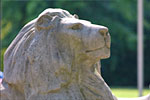
Through the first decade of the twenty-first century the campaign seeks to philanthropically raise £207 million from Imperial’s alumni, staff and friends, and donations from charitable foundations and industry.
Where your support can make a differenceGive now

We’re celebrating 100 years of living science with 100 stories. We’ve collected some of them already, and invite you to share your own stories and memories.

